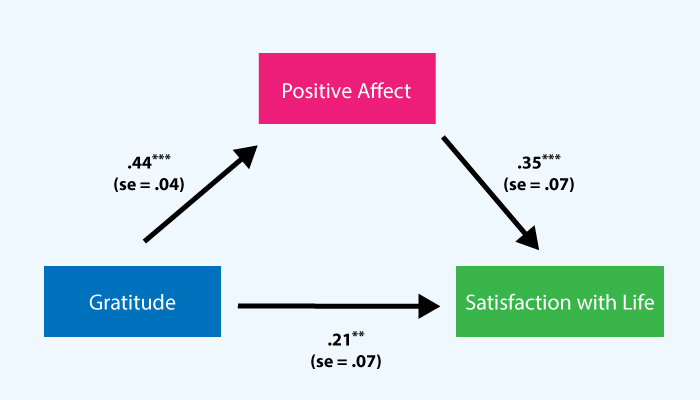Gratitude: a path to well-being? —— Gratitude and subjective well-being among highly able adolescents in Hong Kong
Brief introduction
As a universally regarded virtue, gratitude has long been valued in Chinese culture and tradition. In recent years, positive psychologists have consistently found that gratitude, when considered as “a life orientation toward noticing and appreciating the positive in the world”, can facilitate multiple facets of individuals’ positive functioning. For adolescents, gratitude not only serves a protective factor buffering them from maladaptation, but also a character strength enhancing their positive functioning. As highly able early adolescents are considered to be emotionally vulnerable, it follows naturally whether gratitude similarly benefits this group of adolescents. We put this idea under empirical investigation in the current research. Given that subjective well-being is regarded as an indicator of youth’s positive development, our study specifically examined whether and how gratitude improve their subjective well-being.
Brief description of our research
465 highly able early adolescents (aged 10 to 13, Mage = 11.09, SDage = 1.03)from applicants of PGT programs voluntarily participated in our research. These adolescents completed Gratitude Questionnaire, the Positive and Negative Affect Schedule, and the Satisfaction with Life Scale anonymously. Path analysis was applied to investigate the gratitude → positive and negative affect → satisfaction with life link.
Highlights of our findings
- Analyses revealed that adolescents with higher level of gratitude experience stronger positive affect ( β = .52, p < .001) and report higher level of satisfaction toward life ( β = .36, p < .001)
- Adolescents demonstrating higher level of gratitude were more enthusiastic toward life, happier, more determined, and more alert. These positive affects experienced in turn led to higher satisfaction with life (indirect effect = .15, p < .001)
- Such beneficial effect of gratitude through positive affects was found with both boys and girls, slightly favoring boys (indirect effect = .19, p < .001) than girls (indirect effect = .11, p < .001)
Taken together, consistent with previous findings among various samples, we found that gratitude, through increasing their positive affect, similarly facilitated highly able adolescents’ satisfaction with life.

Implication
Our findings imply that nurturing gratitude can be considered as a means in helping highly able adolescents who are susceptible from socio-emotional issues. In daily lives, some simple and easy steps can be adopted to foster gratitude:
- writing a gratitude journal every day and listing things thankful for;
- writing thanks notes/letters; or
- sending thanks messages/emails to people who you are grateful for
These actions can be means enhancing gratitude and turning such other-oriented strength into one’s own personal resources improving well-being.
Source:
- Chan, D. W., Sun, X., & Chan, L. K. (2015). Gratitude and subjective well-being among highly achieving Chinese early adolescent students in Hong Kong. In V. Adkins (Ed.), Subjective Well-Being: Psychological Predictors, Social Influences and Economical Aspects (pp. 95-111). New York: Nova Science Publishers. Full-text Download
Reference and further reading:
- Froh, J. J., Sefick, W. J. & Emmons, R. A. (2008). Counting blessings in early adolescents: An experimental study of gratitude and subjective well-being. Journal of School Psychology, 46(2), 213–233. https://doi.org/10.1016/J.JSP.2007.03.005
- Lyubomirsky, S., Sheldon, K. M. & Schkade, D. (2005). Pursuing happiness: The architecture of sustainable change. Review of General Psychology, 9(2), 111–131. https://doi.org/10.1037/1089-2680.9.2.111
- Wood, A. M., Froh, J. J. & Geraghty, A. W. A. (2010). Gratitude and well-being: A review and theoretical integration. Clinical Psychology Review, 30(7), 890–905. https://doi.org/10.1016/j.cpr.2010.03.005
- Wood, A. M., Joseph, S. & Maltby, J. (2008). Gratitude uniquely predicts satisfaction with life: Incremental validity above the domains and facets of the five factor model. Personality and Individual Differences, 45(1), 49–54. https://doi.org/10.1016/j.paid.2008.02.019
- Wood, A. M., Linley, P. A., Maltby, J., Kashdan, T. B. & Hurling, R. (2011). Using personal and psychological strengths leads to increases in well-being over time: A longitudinal study and the development of the strengths use questionnaire. Personality and Individual Differences, 50(1), 15–19. https://doi.org/10.1016/j.paid.2010.08.004